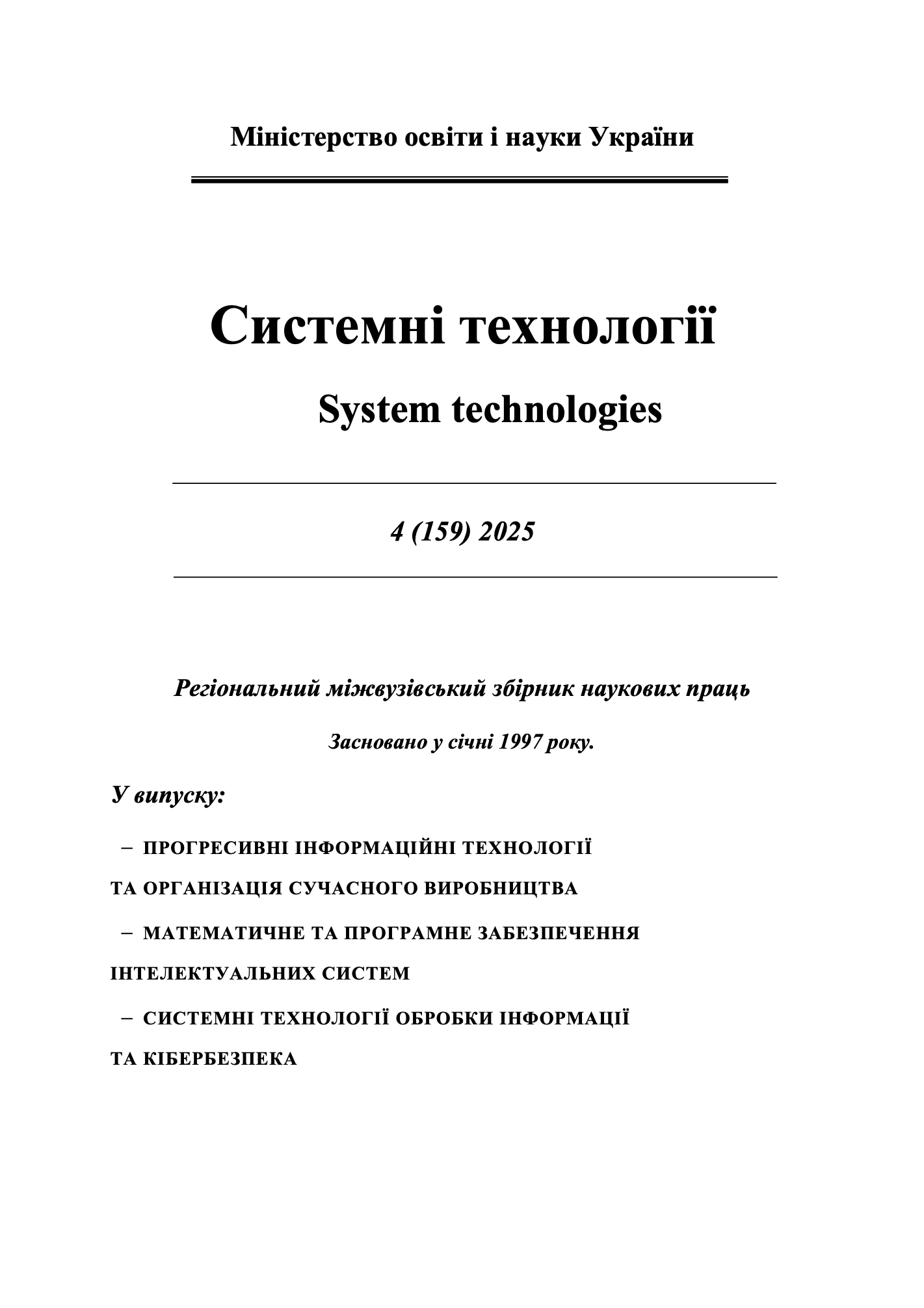Mathematical description and optimization of automatic control systems using pulse width modulation of signals
DOI:
https://doi.org/10.34185/1562-9945-4-159-2025-13Keywords:
mathematical modeling, nonlinear discrete systems, automatic control, optimization methods, pulse-width modulation, computer experiment.Abstract
An approach is proposed for the adequate description of the processes of state change and optimization of complex discrete automatic control systems (ACS), in which the conver-sion of control signals into a sequence of pulses with time modulation is used. Requirements for actuators in many cases of practical use produce the need to use such a conversion to achieve proportional regulation of the output action in accordance with the input control sig-nal. The description of discrete automatic control systems of the specified type is generalized and an equivalent transformation of the discrete equations of their motion is proposed. The specified transformation allowed to take into account the change in the length of the control pulses for the linear continuous invariant part of the automatic control system. The proposed equivalent transformation of the equations of motion for discrete (im-pulse) systems with a constant sampling interval significantly simplifies their mathematical description and requires fewer resources for computational implementation. For automatic control systems with pulse-width modulation of the control signal, the algorithm for synthesis and obtaining the control signal has been improved, namely, the law of changing the polarity of the pulses and the form of the modulation characteristic based on the Lyapunov method. A distinctive feature of the proposed approach is the inclusion in the criteria of optimal-ity of energy costs for control in the form of a dependence on the duration of control pulses. Functional dependencies were obtained in a closed analytical form, which establish the form of the law of pulse polarity change and analytical description of the modulation characteristic of the pulse-width converter of the control signal according to the given criterion and pa-rameters of the invariable continuous part of the ACS. A computer experiment and simulation were performed when solving the test problem. The obtained results of solving the test problem confirm the effectiveness of the pro-posed approach. It was established that when using optimal nonlinear control laws, the qual-ity criterion is improved compared to the applied linear ones.
References
Richard C. Dorf and Robert H. Bishop. Modern control systems. Pearson Education Lim-ited, 2022. 1024 p.
Graham C. Goodwin, Stefan F. Graebe and Mario E. Salgado. Control system design. Pren-tice Hall, 2000. 908 p.
System technologies for modelling of complex processes / Monograph, edited by prof. A.I. Mikhalyov. Dnipro: NMetAU –CPI “System Technologies”, 2016. 608 p.
Suchasna teoriia keruvannia: navch. posib. / I.V. Novytskyi, S.A. Us, m-vo osvity i nauky Ukrainy, Nats. hirn. un-t. Dnipro: NHU, 2017. 263 s.
Teoriia tsyfrovykh system upravlinnia / I. R. Parkhomei ta in. Kyiv: KPI im. Ihoria Sikor-skoho, 2020. 135 s.
Fedoryshyn R., Klos S., Savytskyi V., Kril S. Improvement of pulse-width modulation al-gorithm for thermal plant control. Energy Engineering and Control Systems. 2017, Vol. 3, №. 2, P. 63–72.
Tengfei Liu, Zhong-Ping Jiang. Distributed control of multi-agent systems with pulse-width-modulated controllers. Automatica. 2020, Vol. 119.
URL: https://doi.org/10.1016/j.automatica.2020.109020Get rights and content
Synthesis of an Automatic Control System with Pulse-width Modulation According to the Speed Criterion.
Downloads
Published
Issue
Section
License
Copyright (c) 2025 System technologies

This work is licensed under a Creative Commons Attribution 4.0 International License.















